Want to improve your Instagram ad targeting? Wondering how to get Instagram ads in front of a competitor's audience?
In this article, you’ll learn how to research and target competitors' audiences in your next Instagram ad campaign.
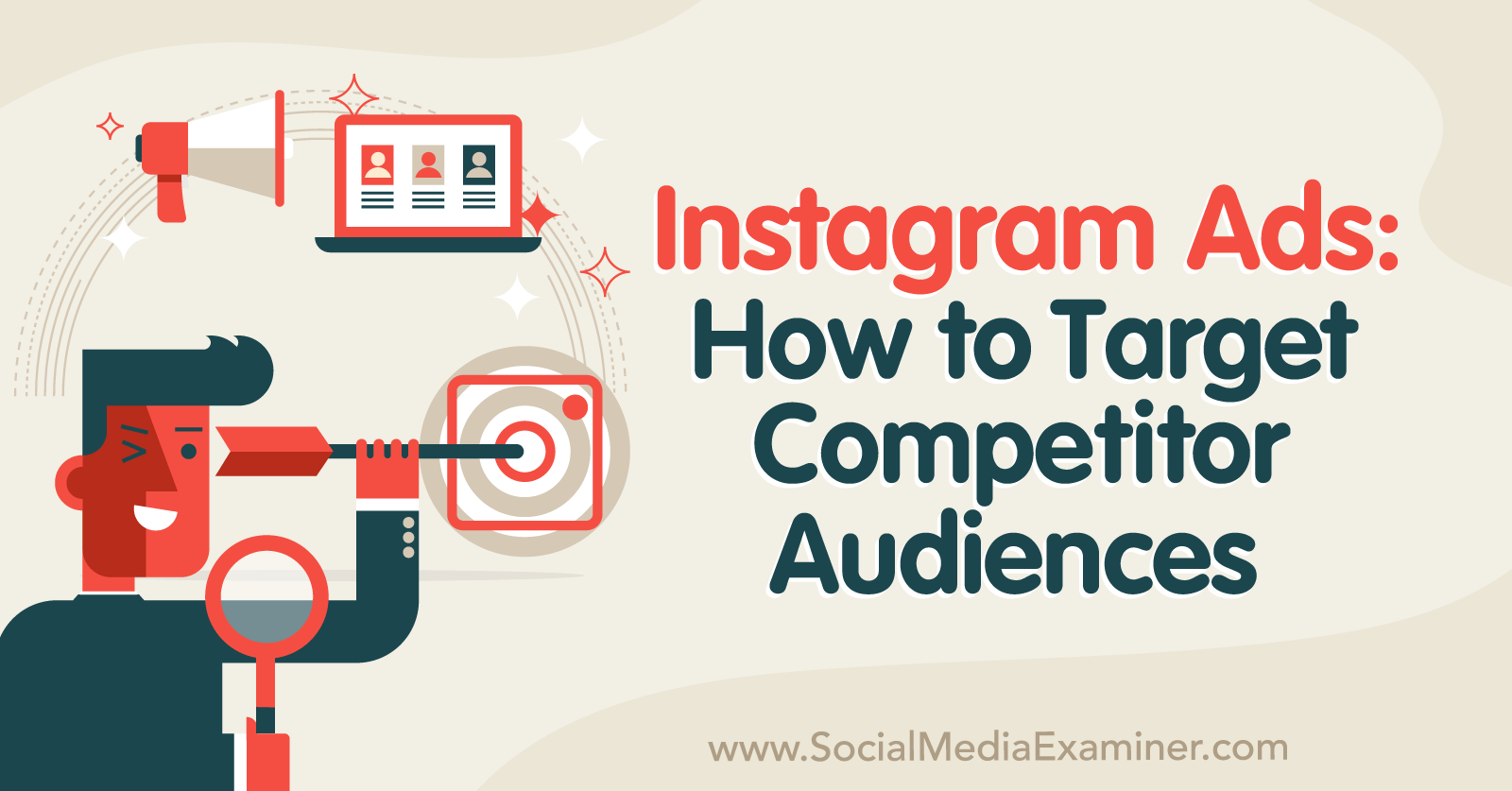
#1: How to Research Competitors' Instagram Ads Audience Targeting
Before you begin building Instagram ads audiences, take some time to research who your competitors are targeting. Let’s go over some options for researching paid and organic content to inform your Instagram ads targeting.
Research Competitors' Instagram Ads in the Meta Ad Library
To find the Instagram ads your competitors are currently running, browse the Meta Ad Library. Start by searching for their company names or brands. If your competitors are running Instagram ads, you’ll be able to see any active Instagram ad.
By default, Meta displays all active Instagram ads in the same place as they show active ads being run on Facebook, Messenger, and the Audience Network. To narrow your search, click the Filters button in the upper-right and select Instagram from the platform drop-down menu.
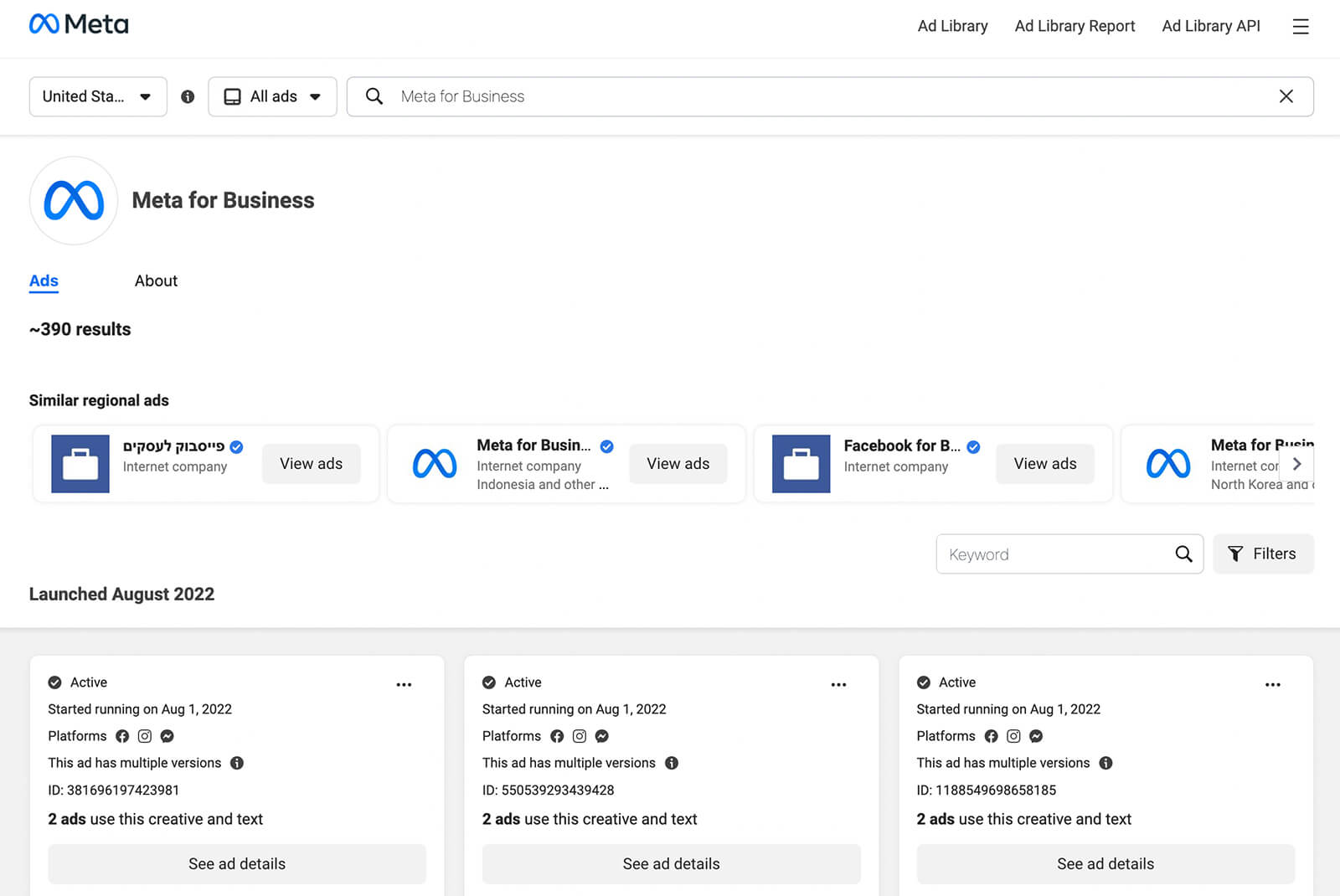
If your competitors have a lot of active Instagram ads, you might want to narrow your search further. You also have the option to filter the Instagram ads you see by language and media type including image, video, and memes.
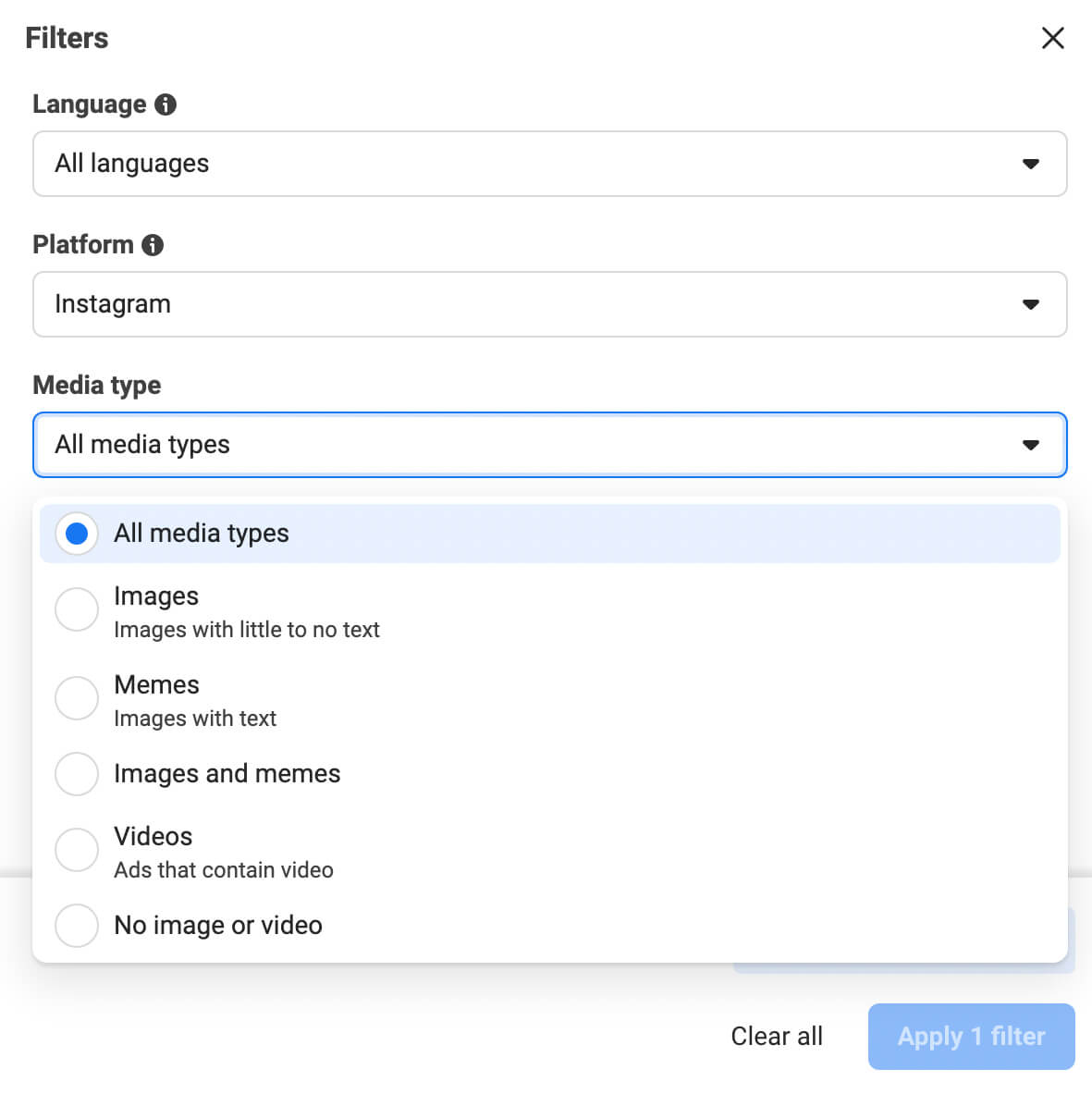
If your competitors aren’t running any Instagram ads or if you just want to see more ideas, type a keyword into the Meta Ad Library instead. You can use keywords related to your industry, products, or services to see thousands of related Instagram ads.
To get a closer look at any of the active Instagram ads content, click the See Ad Details button above the ad. From here, you can read the copy, watch the videos, and scroll through all of the active versions of the ad.
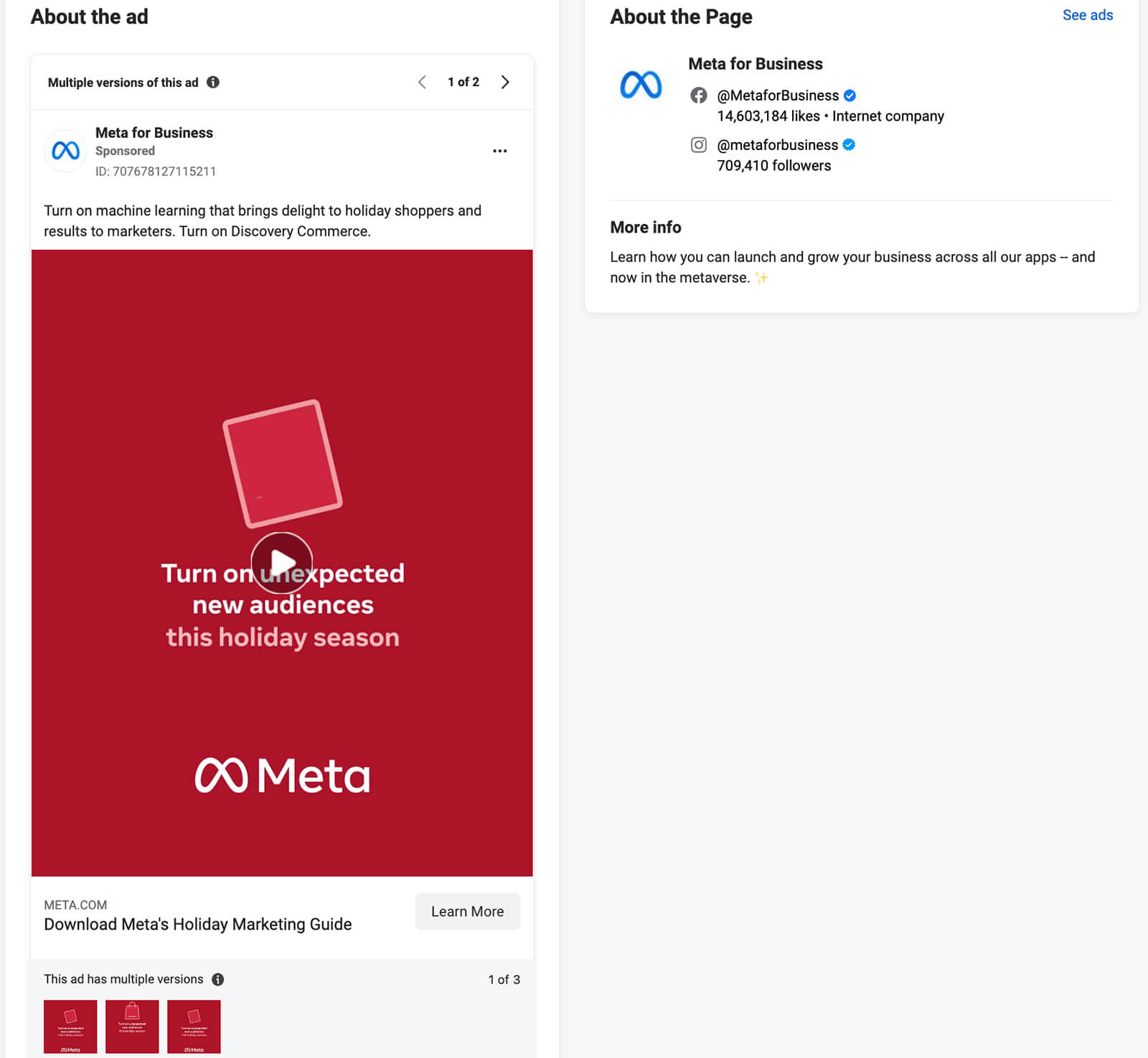
You can also visit the landing page for any of Instagram ads you see. Click the call to action embedded in the ad to load the landing page. From here, you can get even more data on your competitors’ offers and audiences.
The Meta Ad Library won’t reveal the exact audience targeting parameters your competitors are using for Instagram ads but seeing these details can help you understand the types of people they’re targeting.
For example, you might determine that your competitors are using Instagram ads to target people who work from home. If that audience segment aligns with your ideal customer profile, then you might consider targeting them with your own Instagram ads. We’ll cover how to target specific interests and behaviors below.
Research Competitors' Instagram Ads in the Instagram Feed
To find out more about the audiences your competitors are targeting with Instagram ads, open the Instagram app. Scroll through your feed and keep an eye out for ads from competitors or other relevant brands or offers.
When you see an Instagram ad that looks like it’s geared toward your target audience, tap the three dots in the upper-right corner. Then select Why You’re Seeing This Ad. Instagram will show you one or more reasons your account fits the target audience for the ad.
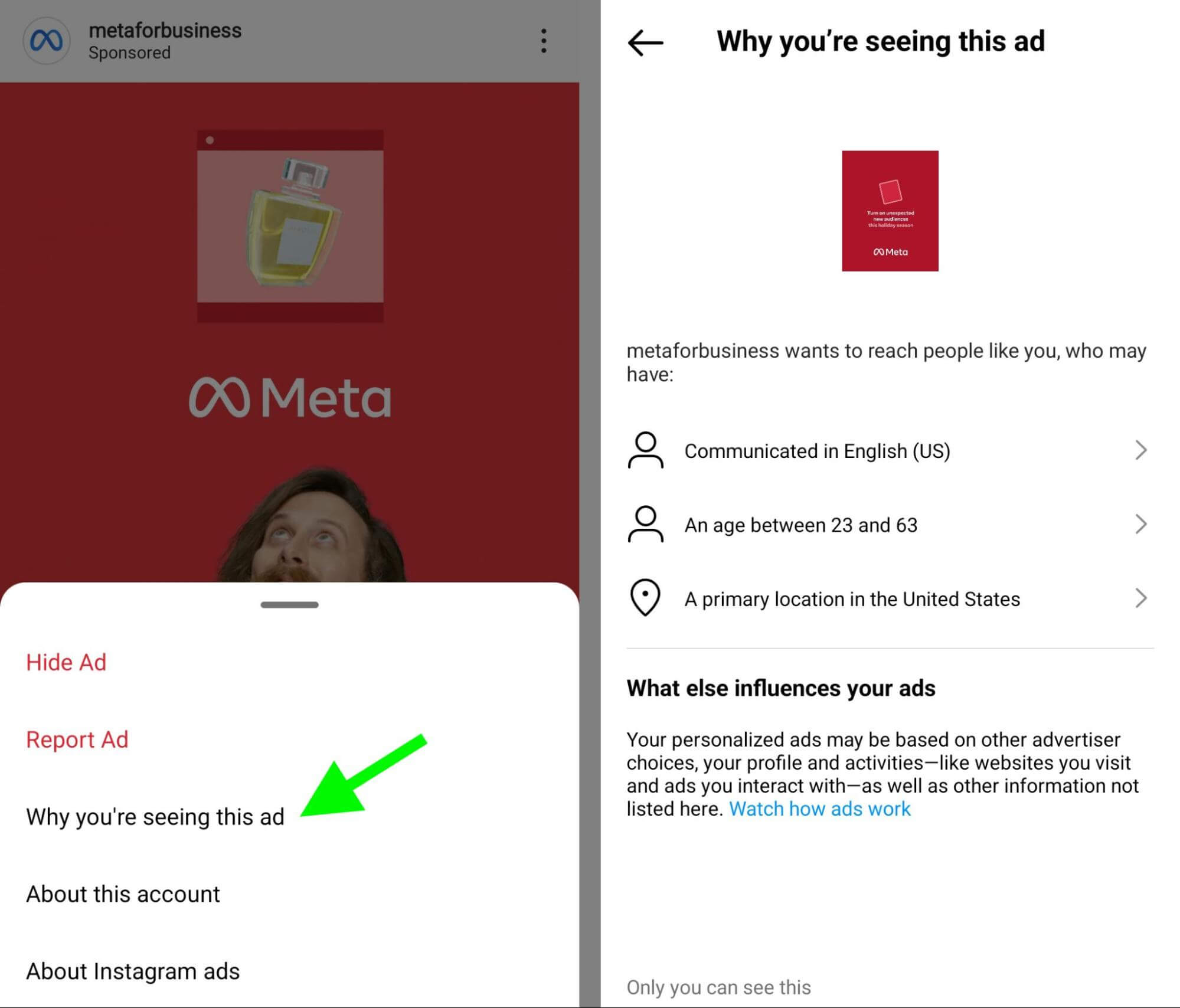
For example, you can typically view the demographic settings for Instagram ads. While these parameters are broad, they can still serve as a guide. For example, you might find that competitors are targeting a different language or age range with their Instagram ads, which might inspire you to adjust your own targeting parameters.
Get World-Class Marketing Training — All Year Long!
Are you facing doubt, uncertainty, or overwhelm? The Social Media Marketing Society can help.
Each month, you’ll receive training from trusted marketing experts, covering everything from AI to organic social marketing. When you join, you’ll also get immediate access to:
- A library of 100+ marketing trainings
- A community of like-minded marketers
- Monthly online community meetups
- Relevant news and trends updates
In some cases, you might notice that the advertiser used interest-based targeting to reach your account with Instagram ads. Make a note of the interests you spot, and if they match your ideal customer profile, consider adding them to your target audience.
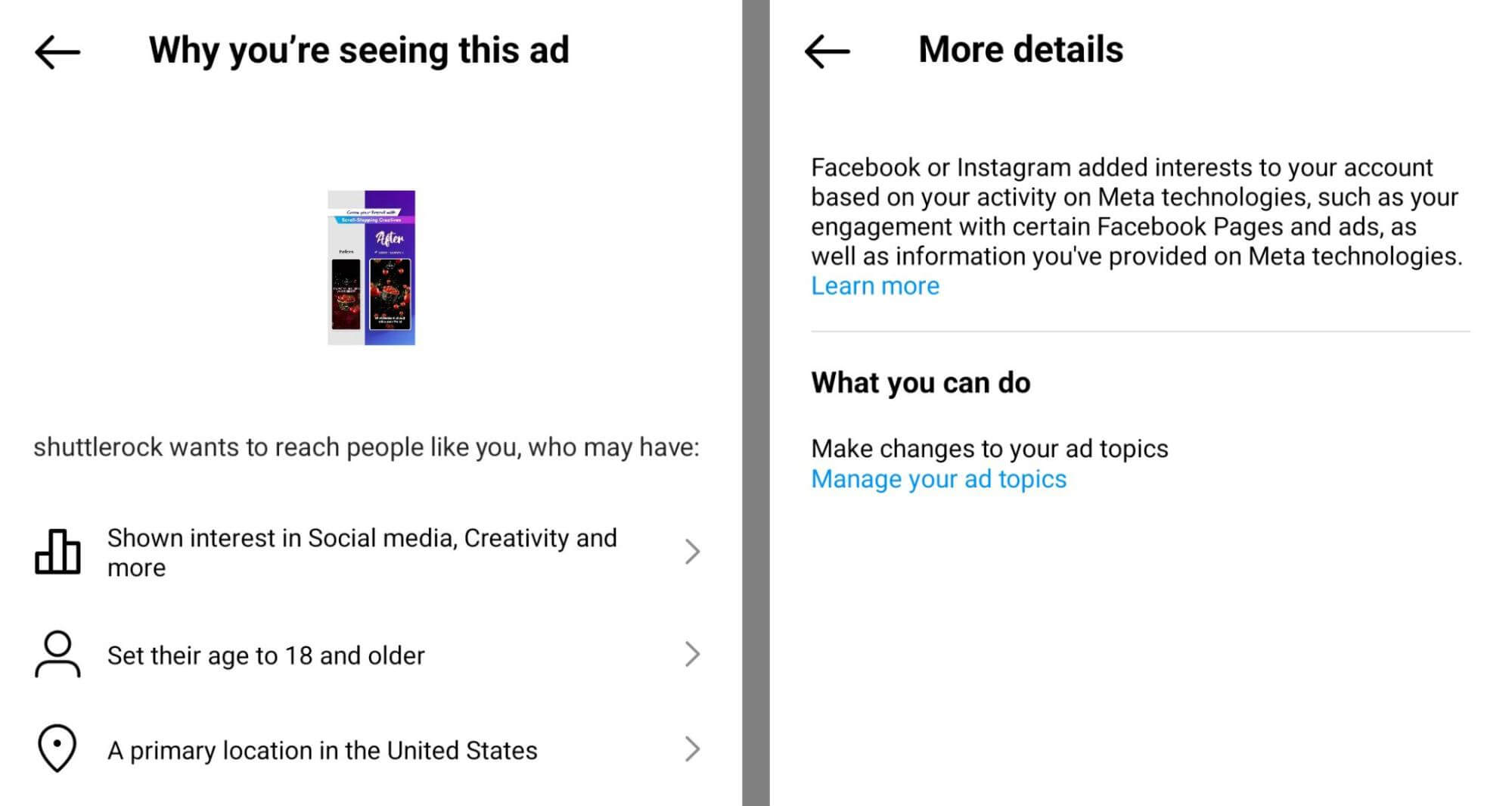
You might also see that your competitors are targeting an audience that’s similar to one they’ve already built. You won’t be able to copy their lookalike audience sources but you can start thinking about your top-performing custom audiences and plan to use them as the source for your own lookalikes.
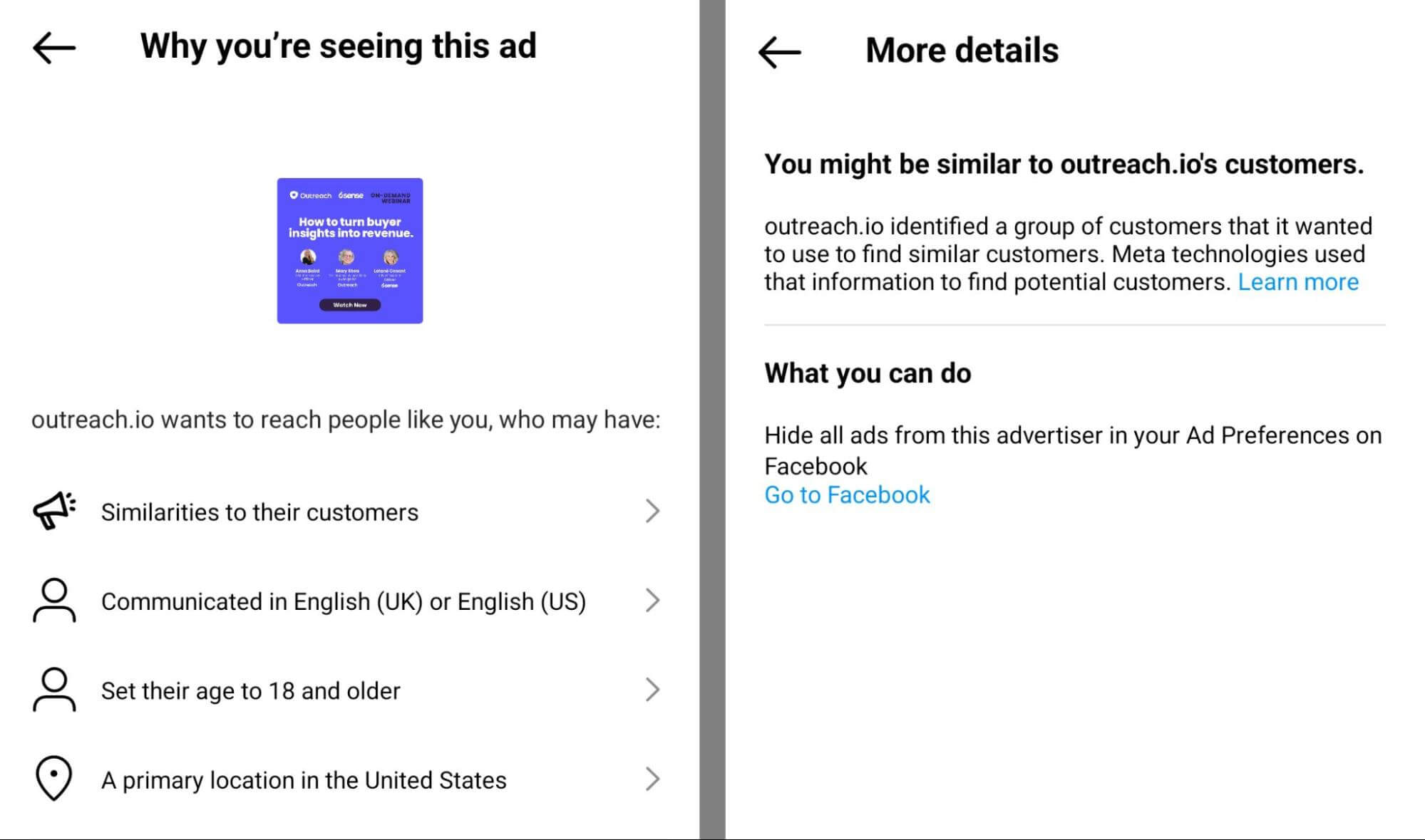
Research Your Competitors’ Followers
To get more ideas for targeting competitors’ audiences, spend some time researching their followers. Tap through their last week or month of posts and scroll through the comments for each.
Although Instagram doesn’t designate top fans, it’s relatively easy to spot loyal fans of an Instagram account. Look for followers whose names pop up again and again. Then tap their username to visit their Instagram profile.
First, make note of their audience size. If they have a verified account or a relatively large audience (over 10,000), then they may be influencers. That means you may be able to leverage their accounts for audience targeting.
Next, read their bios to get a better sense of how they fit your competitors’ target audiences. Using this workflow, you can get new ideas for interests, behaviors, and even influencers to include in your advertising audiences.
#2: How to Target Competitor Audiences with Instagram Ads
Now that you’ve done your research, you can start building your Instagram ads audiences. Although you can create and save them in Audience Manager, the estimated sizes you’ll see there assume ad placements across Meta platforms.
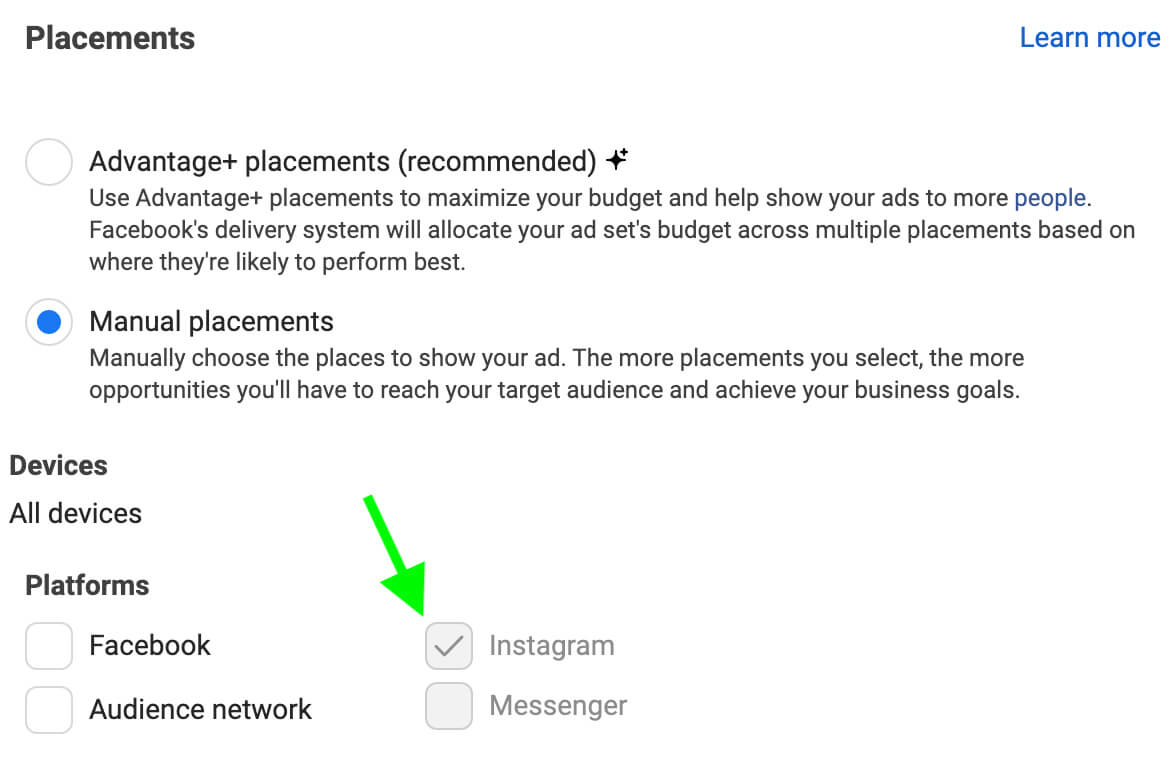
When you’re planning an Instagram-only campaign, you’ll get a more accurate estimate if you use Meta Ads Manager to set up your Instagram ads campaign, select your placements, and build your audience. Let’s walk through the audience-building process in Ads Manager.
Serve Instagram Ads to Competitors' Audiences Directly via Detailed Targeting
If your competitors are major brands or if they have large followings on Instagram, you may be able to target their followers directly. At the ad set level, scroll down to the Audience section and click the Edit button next to Detailed Targeting.
Then enter your competitors’ brands into the search bar. In most cases, you’ll want to look for an option that’s listed as Interests. If you hover over the search result, you’ll see the total estimated audience size. Click to add it to your target audience to see the estimated audience size, given your placements and any other targeting options you’ve set.
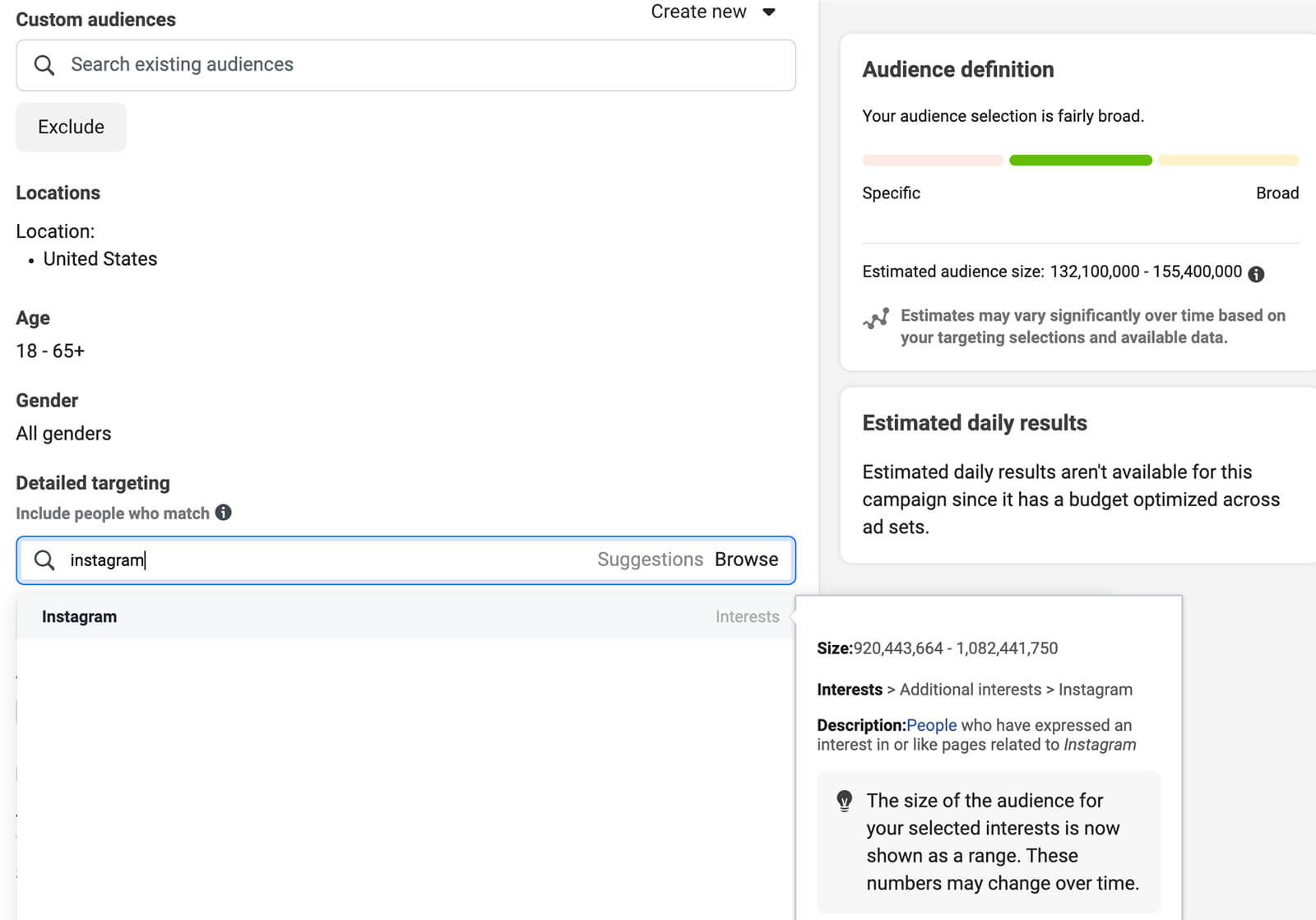
You can target several competitors' audiences in a single Instagram ad set. Or if you’re curious which organization’s audience is the best fit for your offer, you can split-test various Instagram ads sets against each other. See below for a recommended workflow.
Narrow Instagram Ads Targeting to a Competitor's Product
If your competitors are global organizations, you might find that targeting the company leads to an audience that’s too large (10+ million) or overly general. To narrow down your audience, think about targeting one of their products or brands instead.
For example, you might target a few of your competitors’ models or devices rather than the brand. That way, you can reach people with interests and challenges that are more aligned with your offer.

Discover Proven Marketing Strategies and Tips
Want to go even deeper with your marketing? Check out the Social Media Marketing Podcast! Publishing weekly since 2012, the Social Media Marketing Podcast helps you navigate the constantly changing marketing jungle, with expert interviews from marketing pros.
But don’t let the name fool you. This show is about a lot more than just social media marketing. With over 600 episodes and millions of downloads each year, this show has been a trusted source for marketers for well over a decade.
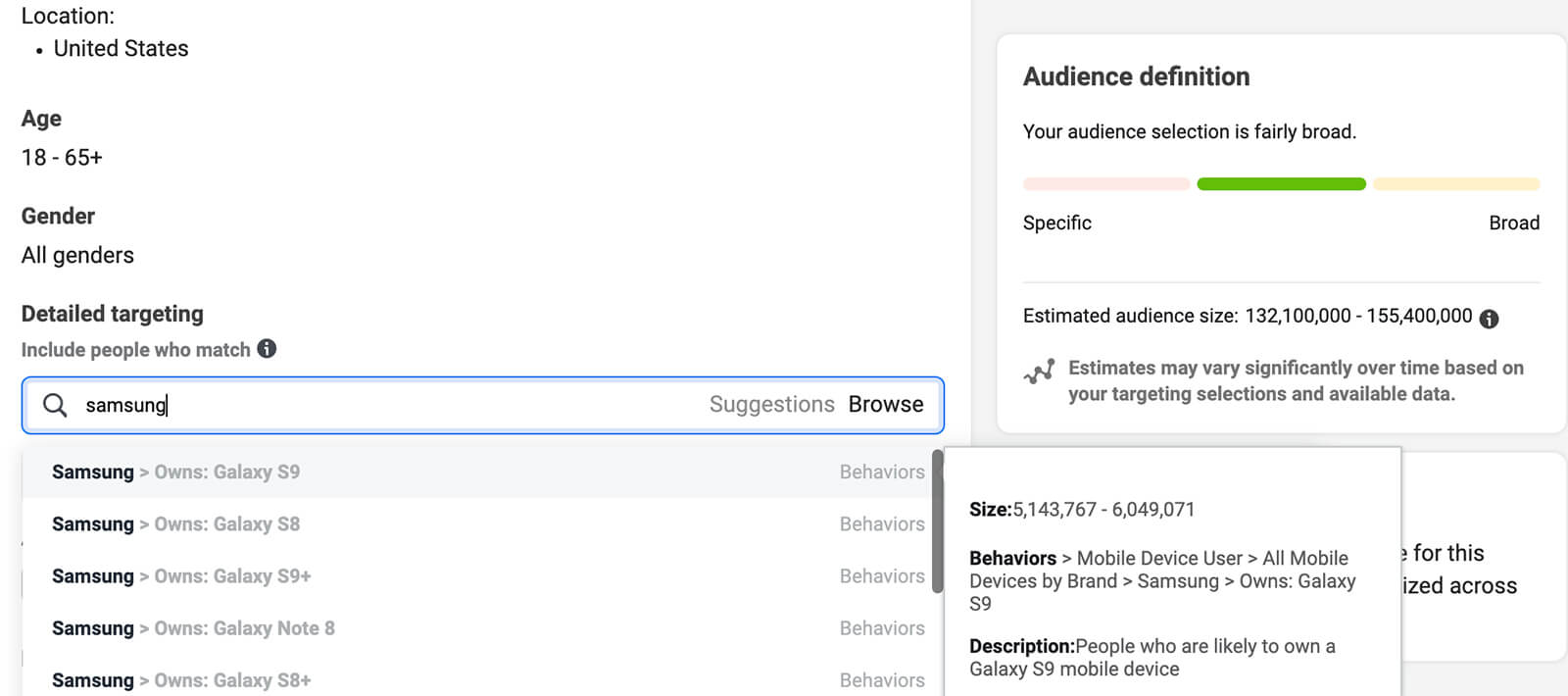
Alternatively, you can exclude certain brands or products to narrow your audience targeting. Then you can avoid spending your Instagram ads budget on people who probably won’t fit your ideal customer profile and zero in on those who do.
Serve Instagram Ads to Competitors' Audiences via Shared Demographic Targeting Traits
To reach the largest possible slice of your competitors’ audiences, use demographic targeting. Also known as broad targeting, these audiences use age, gender, and location settings only, without brands or other interests.
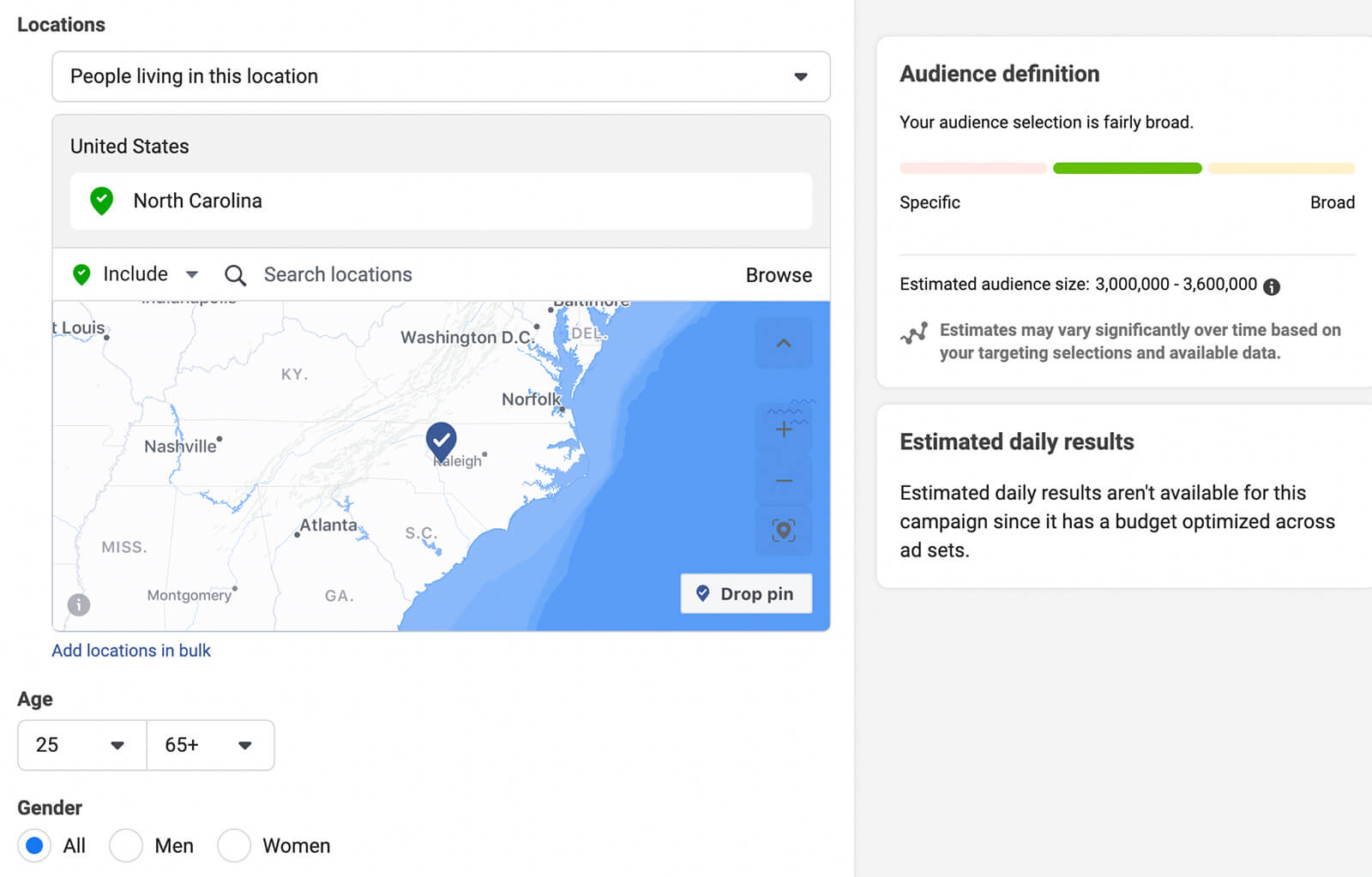
To help deliver your ads to the most relevant audiences, Meta uses signals from your paid content and campaign structure. In other words, the platform delivers your ads to Instagram users who are most likely to complete your objective, based on the content of your ad.
For inspiration, check the demographic settings from your competitors’ ads. You can borrow the exact settings they chose or use them to make smaller adjustments to your typical demographic settings.
#3: Serve Instagram Ads via Retargeting to Warm Up Competitors' Audiences
Getting your ads in front of competitor audiences once is great. But in most cases, you’ll want to create multiple touchpoints for your target audience. You need an Instagram funnel that guides your competitors’ followers from awareness to conversion.
Retarget Competitor Audiences Based On Engagement
One of the best ways to retarget engaged prospects is to use your Instagram account as a remarketing source. In Ads Manager, create a new custom audience and select your Instagram account as the data source.
Then review your options for remarketing. To target somewhat broadly, you can remarket to anyone who interacted with your account or visited your Instagram profile. If you want to reach prospects who showed a higher level of interest, you can also target those who engaged with any of your posts or ads.
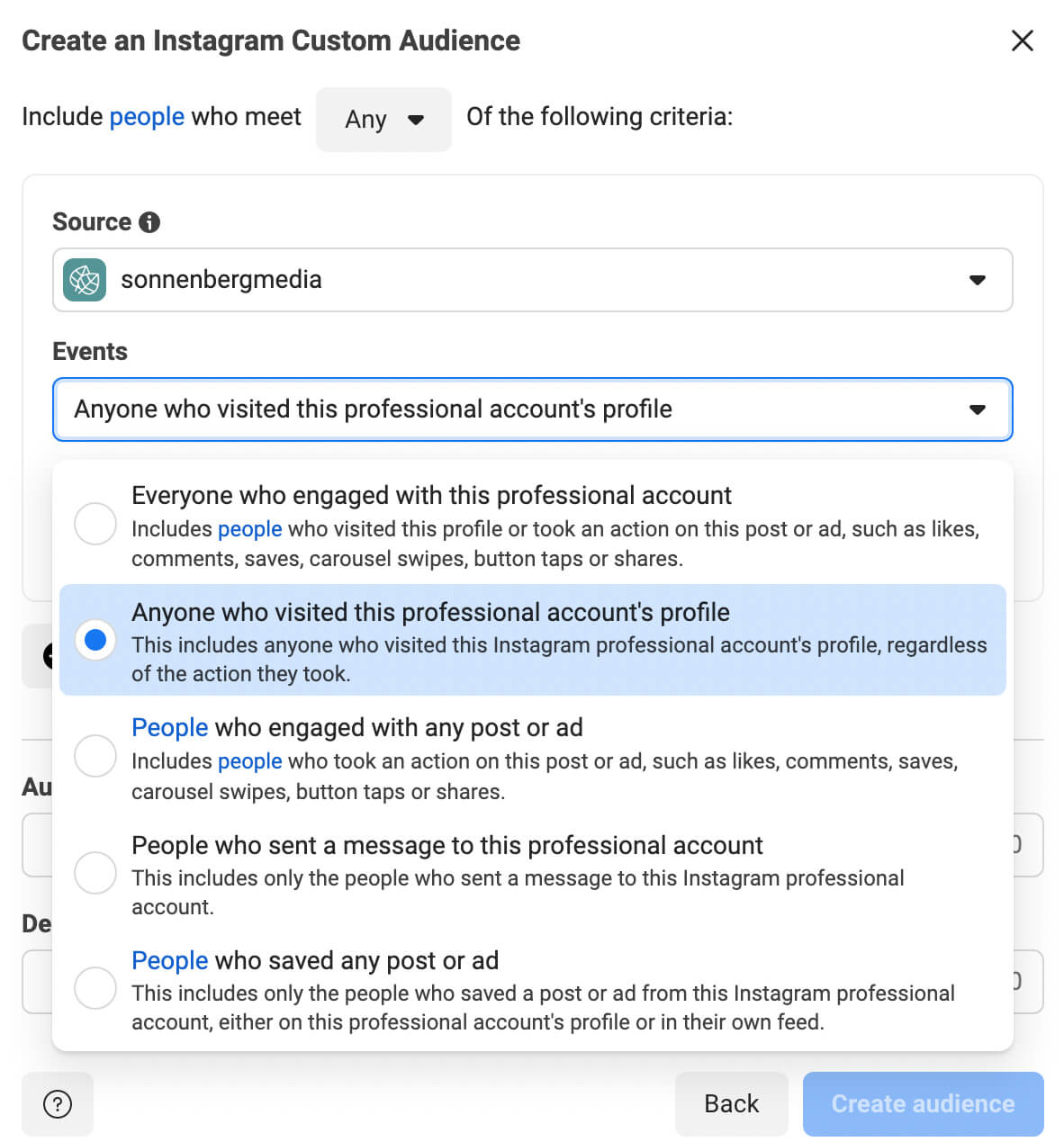
Ads Manager also has options for retargeting people who indicated purchase intent. For example, you can remarket to prospects who saved a post or ad or those who sent a message to your Instagram account. If you’ve already run a campaign focused on getting messages, this option is ideal for following up with prospects.
Retarget Competitor Audiences via a Content Funnel
As helpful as Ads Manager’s Instagram account retargeting options can be, they all focus on engagement, rather than on specific content. If you want to guide competitor audiences from one piece of content to another, you’ve got better options for leading them through your funnel.
For example, you can create a sequence of videos and use each as a retargeting source. In Ads Manager, create a new custom audience and select Videos as the source. Then choose the completion level you want to target.
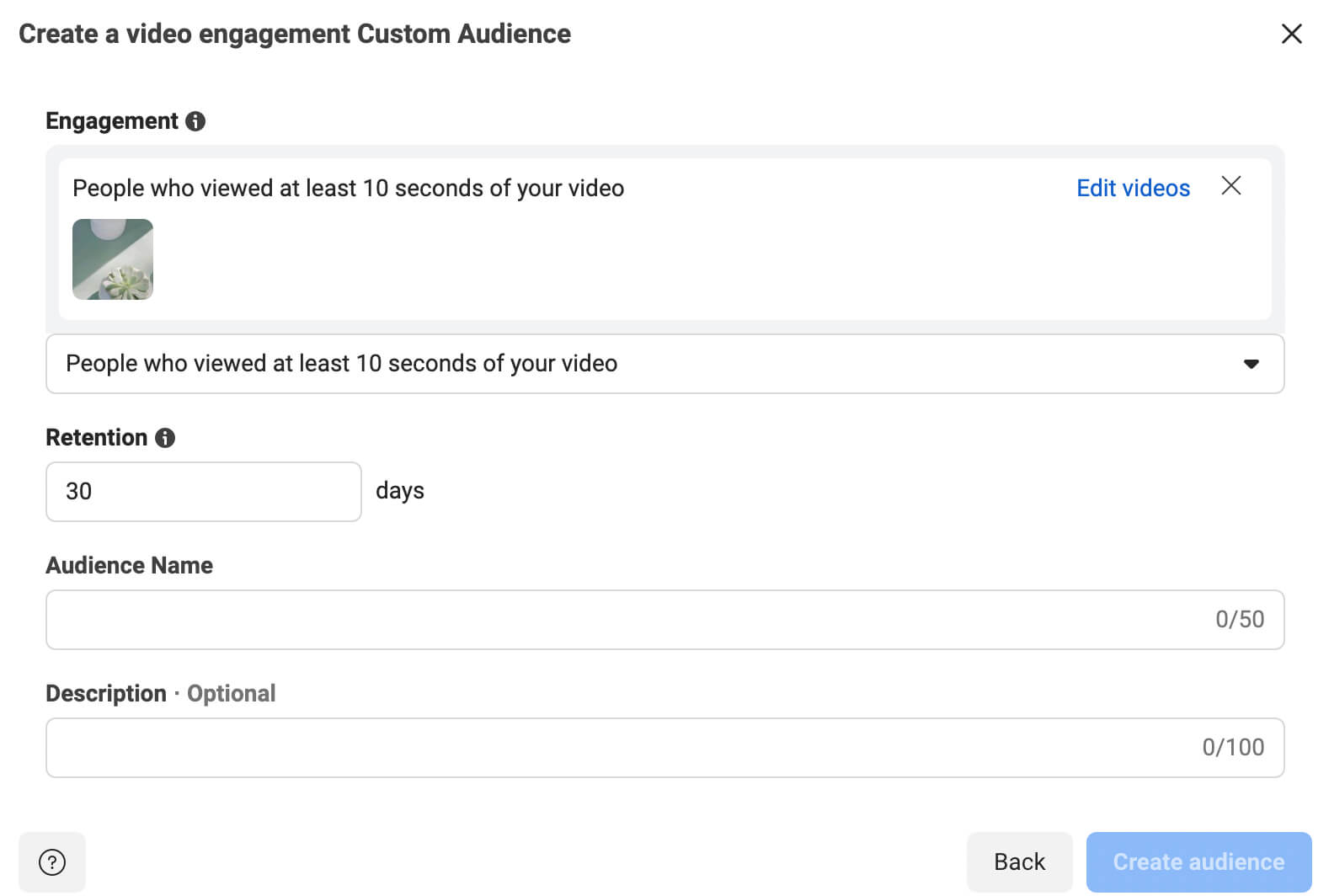
For prospects who watched just a few seconds or only 25% of a video, you might retarget them with another video designed for the same funnel stage. You might retarget high-intent prospects who watched 75% of the video with an ad designed for the next funnel stage.
After selecting the completion level, choose a relevant video from your Instagram account. If you’ve created a few videos for a single funnel stage, you can add as many as you’d like to your custom audience.
Make sure to select a retention timeframe that makes sense for your sales funnel. For example, if you want to target people who engaged recently, set the retention window to 14 or 30 days.
If you’ve run lead form ads or instant experiences on Instagram, you can use them as data sources, too. To reach prospects with purchase intent, for example, you can retarget people who submitted a certain lead form or opened a specific instant experience.
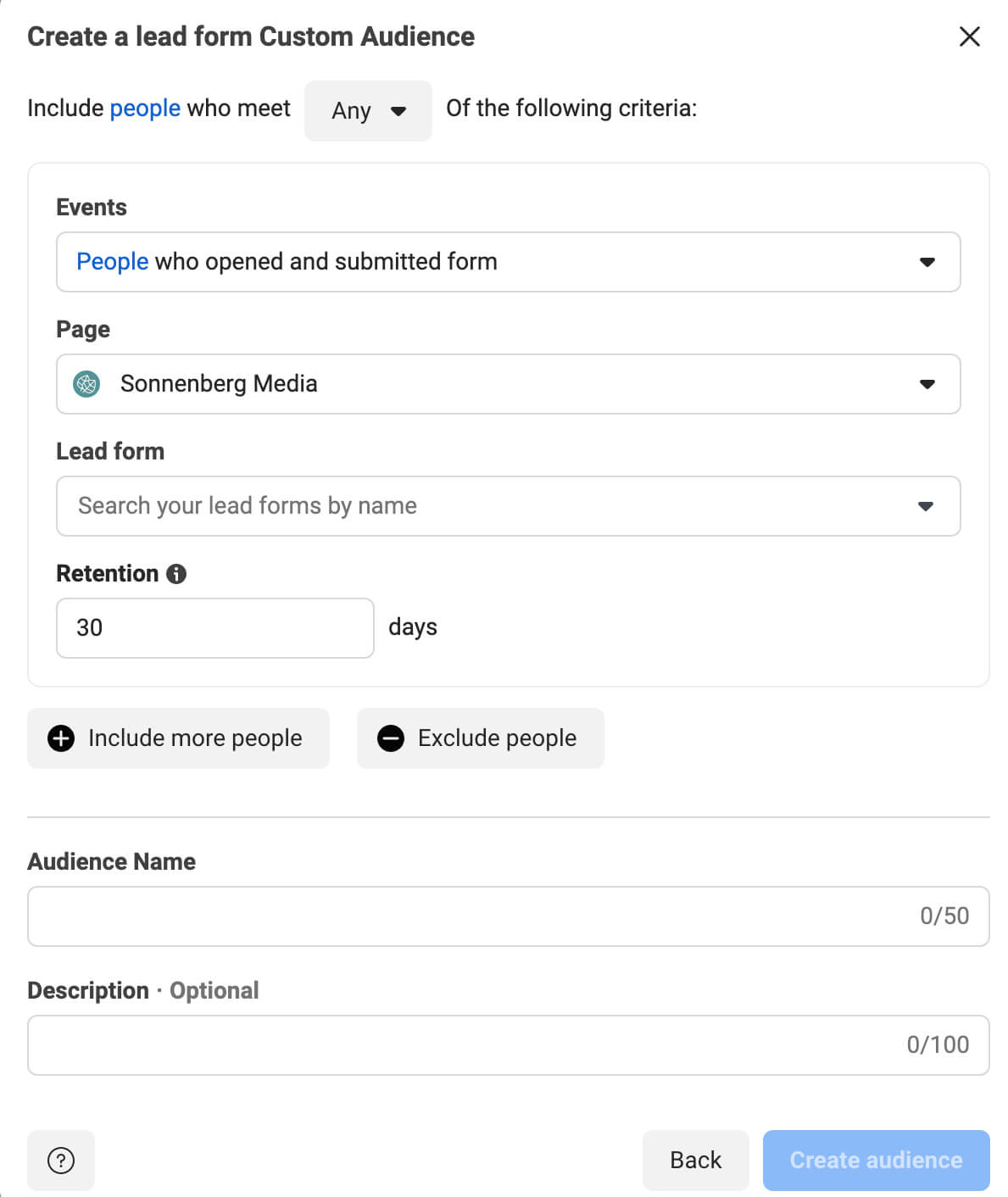
Retarget eCommerce Shoppers
eCommerce and direct-to-consumer brands have even more options for retargeting competitor audiences. Have you been sending organic or paid traffic to your Instagram shop? Create a new custom audience using your Instagram shop as the data source.
Then choose the level of engagement you want to retarget. For example, you can remarket to people who viewed a product collection, saved a product, or added a product to their shopping cart.
You can also retarget prospects who initiated a checkout or those who tapped through to your website from your Instagram shop. With these options, you can get your ads in front of competitor audiences again, and guide them to browse again and complete their purchase.
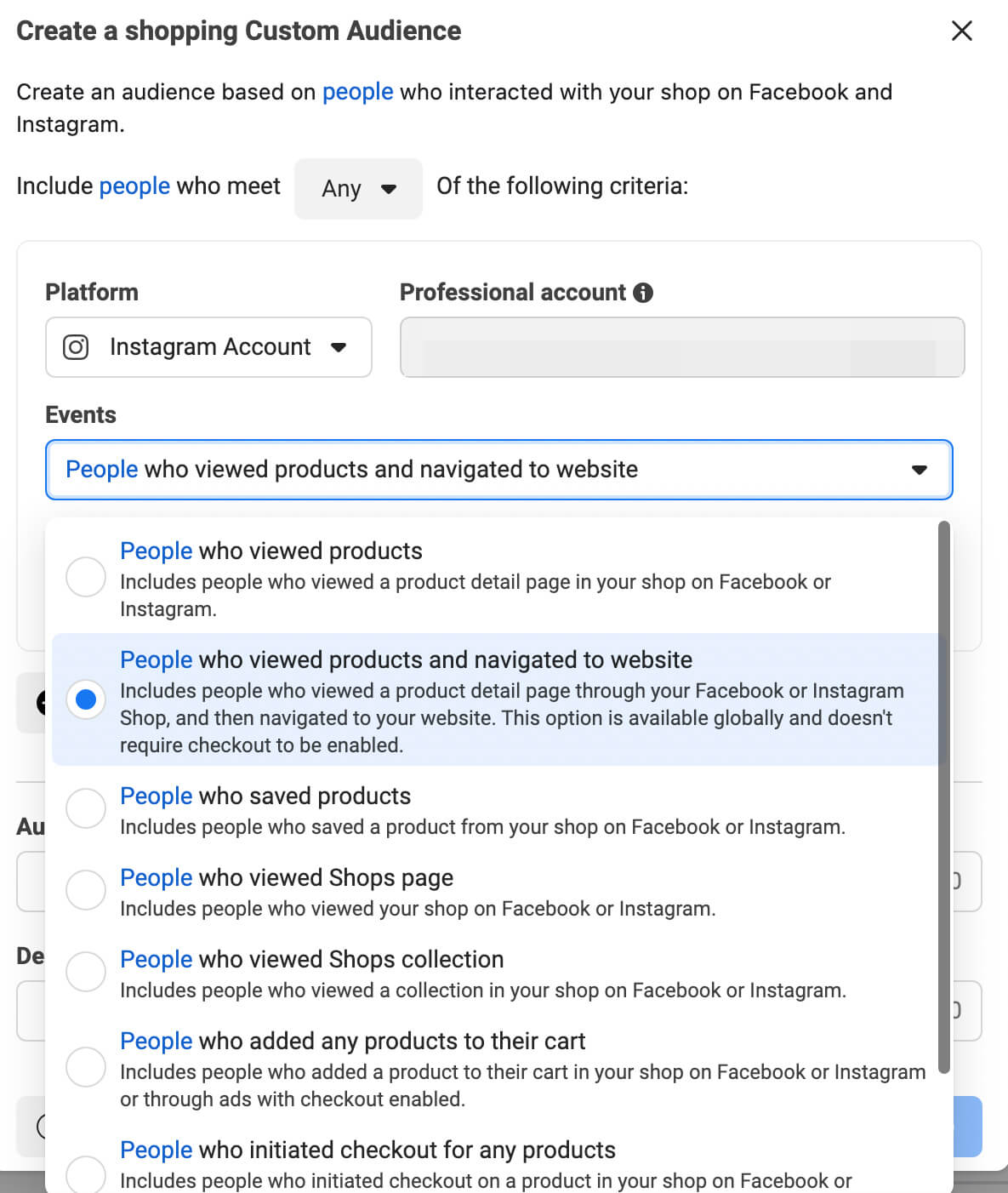
Keep in mind that you don’t necessarily need an Instagram shop to leverage these eCommerce retargeting options. If you have a catalog that you use for Instagram ads, you can retarget people who viewed, purchased, or added products to their cart.
#3: How to Split Test Instagram Ads Audiences
If you create a relatively basic funnel or if you focus on a single competitor, targeting their audiences may be a pretty straightforward process. But what if you’ve built a much more complex funnel or you have a lot of competitor data to work with?
In that case, it’s helpful to split test two or more audiences against each other. Let’s take a look at Meta’s built-in A/B testing tool.
Launch an Instagram Ads Campaign With an A/B Test
You always have the option to create a split test during the campaign setup process. At the campaign level, go to the A/B Test section and flip the Create A/B Test switch. Once you publish the campaign, Ads Manager will automatically prompt you to create another test version with different variables.

Create an Instagram Ads Set to Split Test Audiences
If you didn’t set up an A/B test at campaign launch, don’t worry. You can split test existing ads, too. Open Ads Manager and click the A/B Test button. Decide whether you want to run two existing ads against each other or create a new version to test against an existing ad.
Next, select the ad(s) you want to use as a source and choose a variable to test. If you’re curious which targeting options will deliver the best results, select Audience as the variable.
Then choose the key metric that will determine the winner of the two ad sets. Ads Manager automatically recommends a metric based on your campaign objective. But you can always pick another metric that offers deeper insights into your audience.
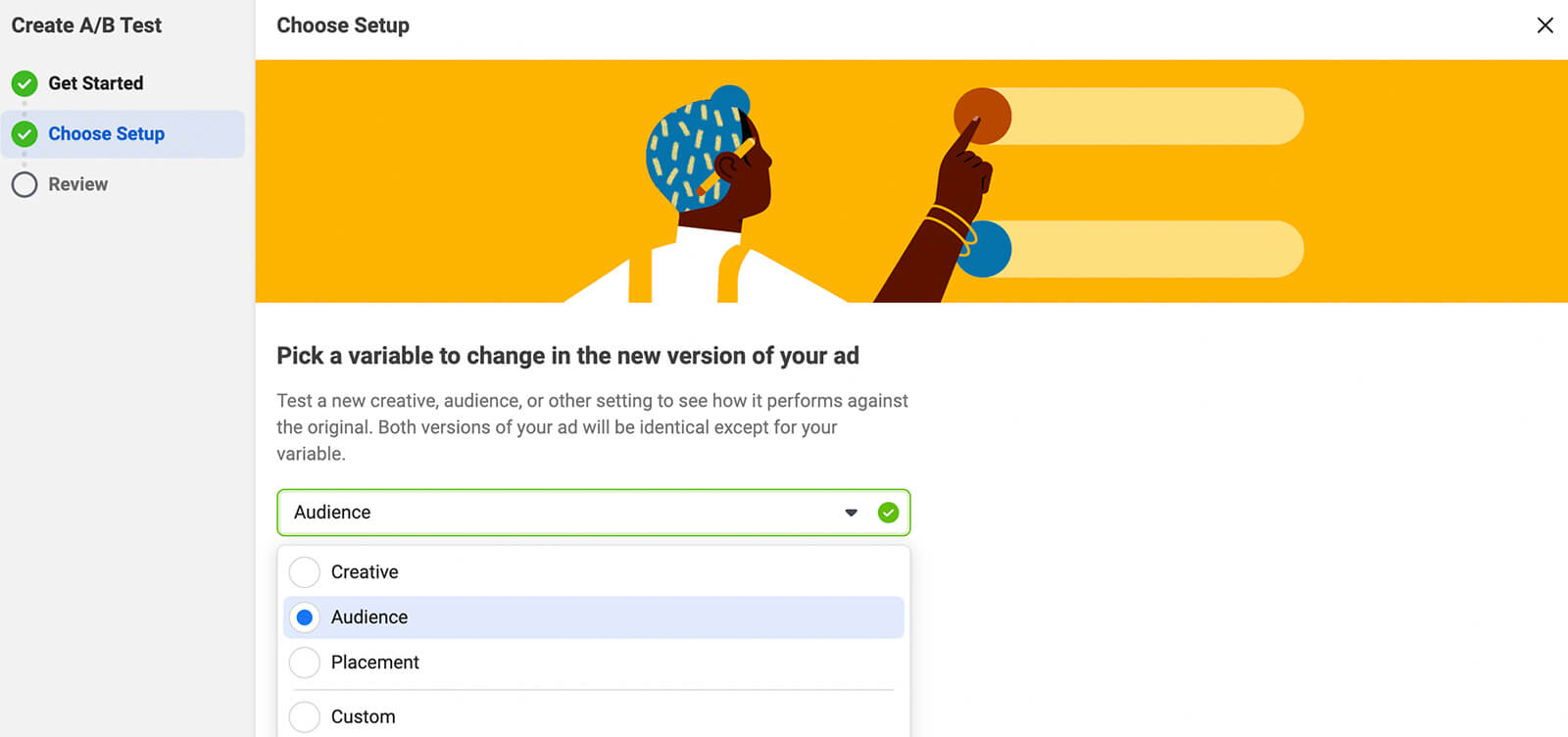
After choosing a key metric, scroll down to see Ads Manager’s estimated test power. Aim for an estimated test power of 80% or higher to increase the chance of a successful test with useful results.
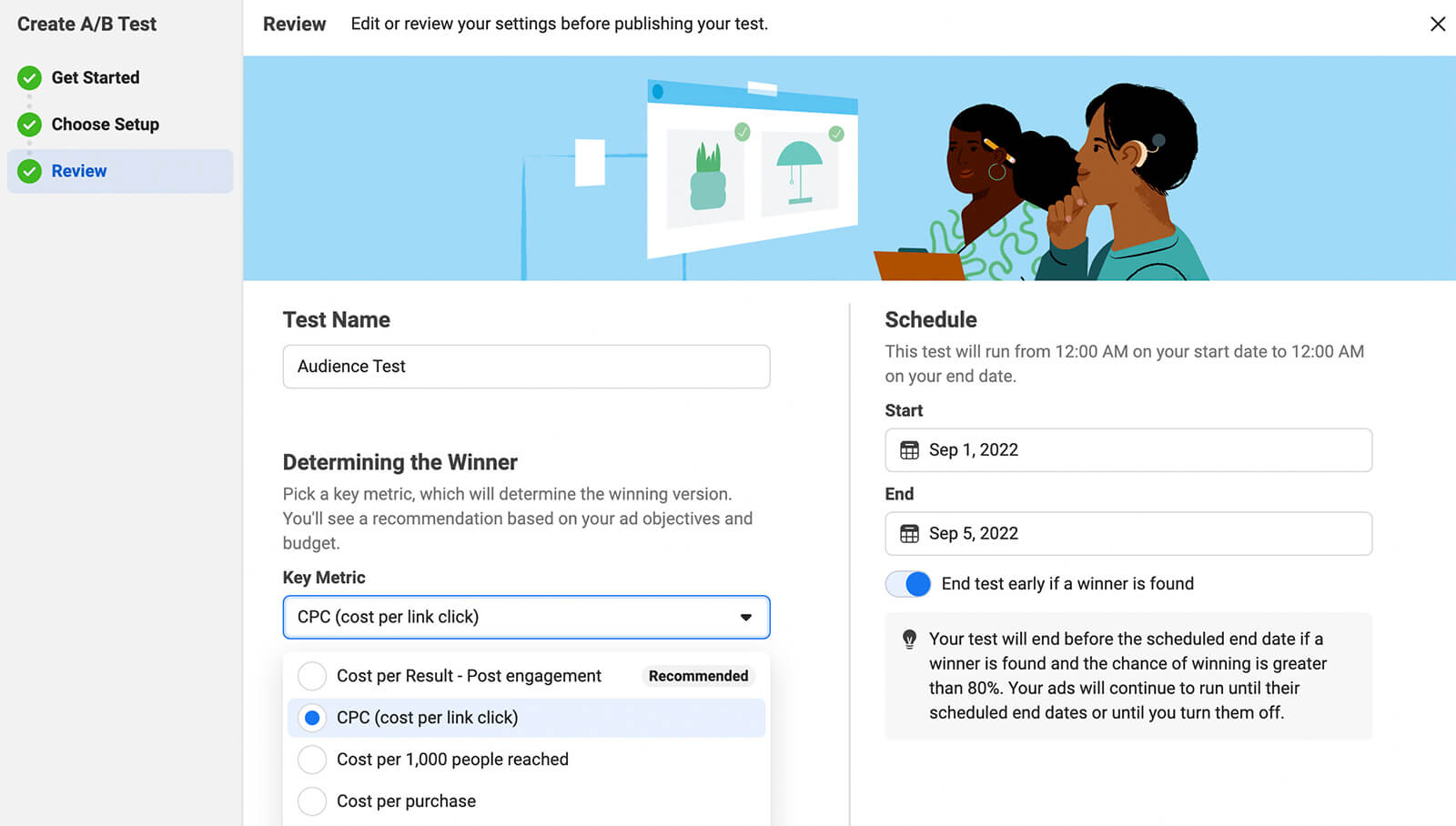
Then click the Duplicate Ad Set button and set up your test ad set if necessary. Make sure to create ad sets that are identical aside from the targeting so you can compare the audiences effectively.
When the A/B test concludes, check Ads Manager for the results. In addition to using the results to optimize your current ad set, you can also use them to inform future Instagram ad campaign funnels and organic content strategies.
Conclusion
Getting your Instagram content in front of competitor audiences doesn’t have to be difficult. With a combination of competitor research, funnel mapping, and target audience building, you can create tons of opportunities to connect with your ideal customers when you create Instagram Stories ads, video ads, and traditional ads.
Stay Up-to-Date: Get New Marketing Articles Delivered to You!
Don't miss out on upcoming social media marketing insights and strategies! Sign up to receive notifications when we publish new articles on Social Media Examiner. Our expertly crafted content will help you stay ahead of the curve and drive results for your business. Click the link below to sign up now and receive our annual report!
Attention Agency Owners, Brand Marketers, and Consultants

Introducing the Marketing Agency Show–our newest podcast designed to explore the struggles of agency marketers.
Join show host and agency owner, Brooke Sellas, as she interviews agency marketers and digs deep into their biggest challenges. Explore topics like navigating rough economic times, leveraging AI, service diversification, client acquisition, and much more.
Just pull up your favorite podcast app, search for Marketing Agency Show and start listening. Or click the button below for more information.

